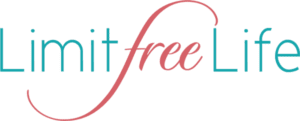Last week I had the good fortune to participate in a zoom event with several wonderful speakers. Daymond John, from “Shark Tank” fame, was telling his compelling story.
He spoke for approximately 90 minutes and toward the very end, he dropped a nugget of wisdom that really hit home for me. He gave goal setting significant credit for his success.
I have loved setting goals my whole life. From a young age, having a goal for the future was critical. It gave me a sense of purpose and direction and informed my daily activities. It was a necessary part of my life for many reasons.
Setting goals did not mean I was always clear on where I was headed, so it’s not that my vision was so clear that I needed goals to reach it. Goal setting was my mechanism to reach certain milestones, on the way to figuring out the vision.
For example, I went to college without a clear idea of what I would find most interesting to pursue further, and I set up an office space for a business before I knew what it would be.
Saving money is another example of a smart goal that may or may not be driven by the knowledge of how it will be used.
Certainly, if you have an overall vision for what you want, then goal setting will be a necessary step to achieve the vision you desire.
Goal setting can be a driving force behind designing the bigger vision as well. Knowing that there are specific activities, classes, skills, or experiences that will enhance your life and help you to travel some unexplored paths, can be instrumental to build the foundation for what comes next.
While this year has been a wild ride so far, we find ourselves in the middle of 2020, and we can regroup with what we know now, and set new goals.
Odds are, that your New Year goals may have been interrupted or no longer make sense.
Now is the perfect time to address our earlier resolutions or rework our goals, so we can make this a productive, profitable and meaningful year.
It’s not too late, and with all the creativity that is emerging from the pressure we’ve experienced, this could still be your best year!
Here are a few actions that I’m taking and perhaps you want to join me:
1. Step back from it all and reevaluate – Despite our limited ability during the pandemic to do many of the things we are used to doing, there is a degree of overwhelm that many are feeling.
Caring for children while working, adding numerous projects because we are conditioned to believe that’s the way to get ahead, and allowing worries and concerns to drive decision making, has contributed to some overachieving tendencies.
Step back and take a look at what you are working on and how. How is your time used and why? Are you feeling like you are doing what matters most?
Take a break from all or some of what you are doing (I’ve been seeing numerous social media breaks) so you can pause and reassess your choices. This is yet another great journaling opportunity with the intention to rethink your work and life.
2. Organize your projects – If you feel that you are working hard and seeing minimal results, take a comprehensive look at what’s on your plate. Write down every project you are actively working on at this time.
Examine what you see. Which projects require outside assistance? Is there a clear plan for the project and is it still important? What results can you reasonably expect and do you still value these outcomes?
3. Prioritize one thing at a time – A high achieving mastermind partner of mine sent me this text today. “As far as business goes, I have decided putting one thing as a priority at a time is the only way to avoid overwhelm.”
This is referring in particular to larger projects such as launching a course or a program. There are many small tasks in every business that must be prioritized as well, but as for the growth projects, allow yourself the opportunity to work through to completion before starting another.
4. Align with your bigger vision – Each and every project you take on should be moving forward a bigger vision, even if that vision is a step along the way to a yet undetermined future vision.
Your vision may change over time as you change, so stay connected to it and work to regularly revise it as you go along. You can’t align with a vision that doesn’t exist.
If you have not worked through your vision of what you want, stop right now and create it – vision board it, write it, draw it or mind map it, but gain that clarity of purpose that is so crucial for motivation and goal setting.
Your goals are meant to move you toward that vision, so keep it always in mind when making decisions.
5. Know your why – Your “why” is a topic that comes up often because it is so necessary. It is a north star that keeps you on track and in a state of desire. Your “why” is your reason for your vision.
You “why” relates to the difference you want to make, the people who count on you and the life you want to live. Your “why” has to be strong, powerful enough to get you going when you lack energy or inspiration.
When you know your why, write it down, frame it and look at it everyday. It’s a ritual that will pay off spiritually and in every other way.
6. Be your own disruptor – Review your vision and projects and ask yourself, “is there another way?” Is there a route to what you want that is outside of your perspective.
Ask others. Brainstorm on your own and with people who support you, to find completely new ways to do what you are trying to do. Your immediate response may be, “no, that will never work” but allow the ideas to percolate and see if it or a variation evolves over time.
Be open. We don’t actually know everything, and thinking we do can be one of the toughest barriers to break. An openness to possibility is one of the best mindsets to adopt.
7. Believe in what you do – How much do you believe in your vision and in your own ability to create and deliver the product or services from which the vision can be realized?
Do you hope you can or do you think you can (like The Little Engine That Could)? Where are your belief issues? Where are the gaps? Belief is something that a coach or a professional can work on with you. It’s of key importance in goal setting.
8. Add achievement tools – Aided by tools, goal setting can be documented, tracked and monitored in a way that is structured and easy to view. There are products and software that can help you with project development depending on the complexity.
You can also design a spreadsheet that keeps you informed of steps, goals and timelines that you can refer to and update that will keep you on top of where you are and what needs to be done, so you take the guesswork out of your daily schedule.
Any time you can create a game (with prizes) for achieving next steps, build that in. Use the tools to eliminate paper, post-its and confusion, and centralize your tasks while keeping a log of the history of the project, for future use.
9. Celebrate the wins – Every task completed is a step in the right direction and a victory for you along the journey. It’s too common to move on to the next step without acknowledging your own efforts or those of your team, in a rush to move on.
This can lead to burnout or fatigue, sometimes resulting in never finishing a project at all. Providing positive feedback and reflection makes all the difference to your team and will help you find that belief that you may struggle with.
The best way to believe in yourself is to take time to notice and admire your efforts.
10. Be accountable – What motivates you to do the things you say you want to do? Your vision and “why” are certainly two important elements, but for the tasks that need to be done along the way, how do you make the time and avoid distraction?
Accountability works. There are many ways to be accountable for your work. It’s simple when you have a boss waiting for your work to appear on her desk, but what if that’s not your situation? You may still need someone expecting to see your results.
Whether a co-worker, coach, or friend is employed, put someone in charge of making sure you get work done. It’s universally needed, so avoid creating deficiencies around the need for accountability.
Use these ten tips as a framework for building your plan for the rest of the year. If you take the time to think through these ideas and do the exercises, you will be ready to make 2020 the best year ever, even if you feel you’ve lost the first half of the year to world shaking events.
I believe we can all use a restart mid-year in a normal year, but with the current situation, it will help to reimagine what’s possible and curtail any thoughts that this year is a lost cause. For a summarized worksheet to help implement these steps, click here: Reimagine 2020 Worksheet


